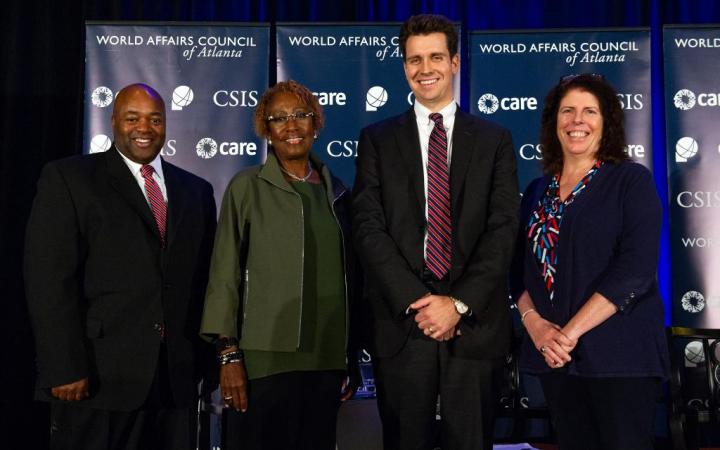27 September 2018, Atlanta, United States - The International Training Centre for Authorities and Leaders in Atlanta (CIFAL Atlanta) in partnership with Hartsfield-Jackson Atlanta International Airport (HJAIA), the World Affairs Council of Atlanta hosted the 7th Annual Atlanta Conference on Global Health. This Conference focused on global health and the environment, with a specific look at the impact of Hurricane Maria.
The Sustainable Development Goal (SDG) 3 pivots on health and calls to “ensure healthy lives and promote well-being for all at all ages”. Even though this SDG is primarily focused on historic Millennium Development Goals- i.e. the fight against infectious pandemics and the achievement of universal health coverage- it also adds a new target related to global health from a disaster risk perspective. More specifically, Target 3.D highlights the need for “strengthening the capacity of all countries, in particular developing countries, for early warning, risk reduction and management of national and global health risks”
In this line, the 7th Annual Atlanta Conference on Global Health focused on the importance of risk reduction and preparedness for natural disasters, including hurricanes. This Conference aimed at raising awareness about the importance of protecting people's health and promoting a sustainable environment that ensures healthy lives.
This Conference brought together approximately 200 attendees including healthcare professionals and private business, academic and government leaders related to the areas of logistics and supply chain management. They discussed about ways to develop strategies to mobilize and receive supplies and improve communication during times of crisis, prepare for disasters effectively, and be effective and efficient in providing aid following natural disasters.
There was significant participation from the Hartsfield-Jackson Atlanta International Airport. The aviation industry plays a critical role during times of natural disasters, as they are essential to sending or receiving materials and supplies. Furthermore, airports often serve as logistics and communication hubs. Hence, the airport’s role during times of natural disasters was highlighted. This role includes relief logistics and supply chain support, as well as serving as a bridge with local companies and organizations, such as UPS and the Centers for Disease Control and Prevention (CDC).



